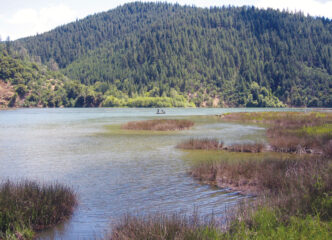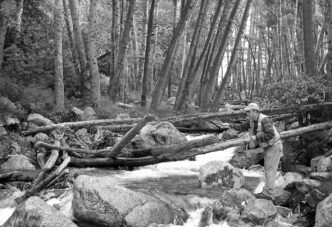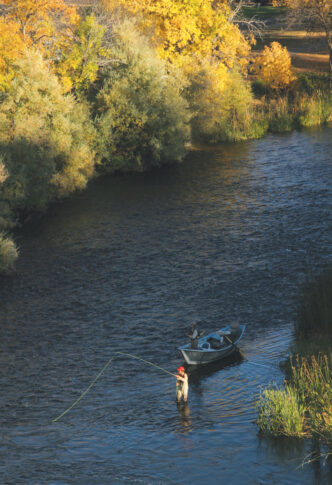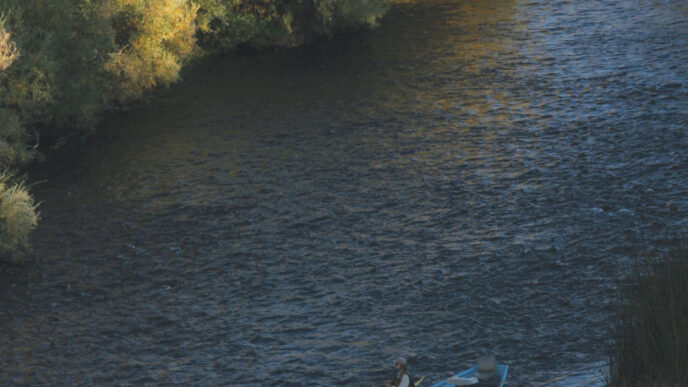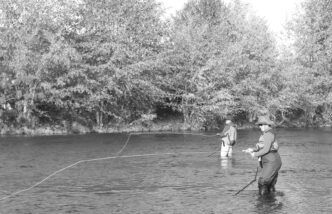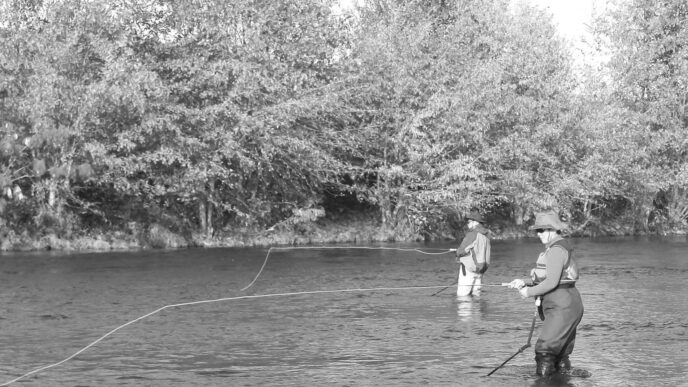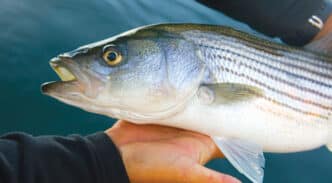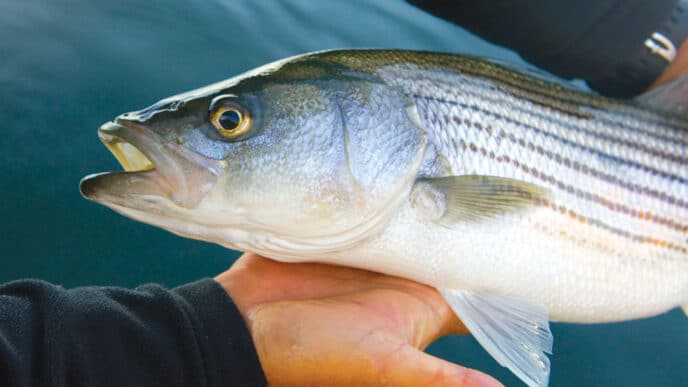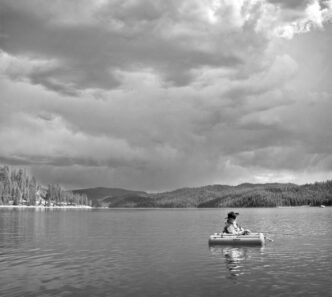It probably sounds pretentious to say so, but fishing that’s too easy can be a real bore. That’s why I wasn’t disheartened to learn about what’s not going on at Trinity County’s Lewiston Lake.
While the California Department of Fish and Game responds to a legal action challenging its hatchery and stocking operations, hatchery rainbow trout are no longer being stocked at Lewiston and a lot of other places. Even though the reservoir has been liberally stocked for generations, each individual fishery must now undergo a “Pre-Stocking Evaluation Protocol” to consider the potential effects of stocking on sensitive or endangered species. Evaluations of the Lewiston Lake fishery haven’t been finished yet.
But just because hatchery fish aren’t being stocked at the present time, it would be wrong to assume there aren’t a lot of fish in Lewiston. Far from it. However, the fish that are still there, hatchery or wild, are likely to become more wary, taking on the frustrating and wonderful characteristics of wild trout. What worked for anglers at Lewiston in the past may no longer be good enough to fool these fish. Consistent success requires a willingness to go beyond the standard techniques. In my opinion, the fishing at Lewiston is becoming a lot more interesting.
Although Lewiston has been liberally stocked for many years, it also holds wild fish. Rainbows spawn in the stream-like area below Trinity Dam. The lake also holds wild Kokanee salmon and a few wild brown trout. (The browns were originally introduced into the lake to help control the population of freshwater lamprey eels, but the state hasn’t stocked them in many years.) As far as the rainbows are concerned, it’s sometimes hard to tell a wild fish from a hatchery fish that’s been in the lake for a while.
Lewiston is one of those places where it’s just a pleasure to spend time, fishing or not. There are many blue-sky days, and the lake is nestled in a scenic valley. While fishing, it’s not uncommon to see ospreys, bald eagles, great blue herons, Steller’s jays, mallards, mergansers, coots, and California and mountain quail. I’ve also seen foxes, coyotes, plenty of deer, and, on the road between the town of Lewiston and the lake, a black bear.
The Lake’s Environs
Lewiston is the six miles of water between Trinity Dam, at the top, and Lewiston Dam, at the bottom. At the top, it is much more like a river than a lake, with flows fluctuating from fairly brisk to slow, depending on the day. The best fishing is to be found in the central part of the lake in the areas around Pine Cove launch ramp and Lakeview Terrace. The lake consists of crystal clear Trinity River water.
The parking lot next to the Pine Cove launch ramp can remind you of Costco on a Saturday afternoon, even with the five dollar parking fee. It’s a popular place, and for good reason. The lake’s current is often moderate here, and there are a lot of fish in the area. Through the clear water, you can see verdant green weed beds undulating in the deep current and trout scattering like flocks of birds. In fact, the clarity of the water is one of the things that make fishing here challenging. You may notice a pod of rising fish, then, when you stand up in your pram to make a cast, the fish notice you and move 15 feet farther away. No one said this was going to be easy.
There are islands both upstream and down, and there’s a lot of interesting water to cover. Anglers using a variety of boats and motors can be found in this area, but it can also be effectively fished with a pontoon boat. Prams are the most popular boats because they are roomy, stable, and can accept gas or electric motors. Regardless of what you fish from, you will need an anchor to hold you in place in the current.
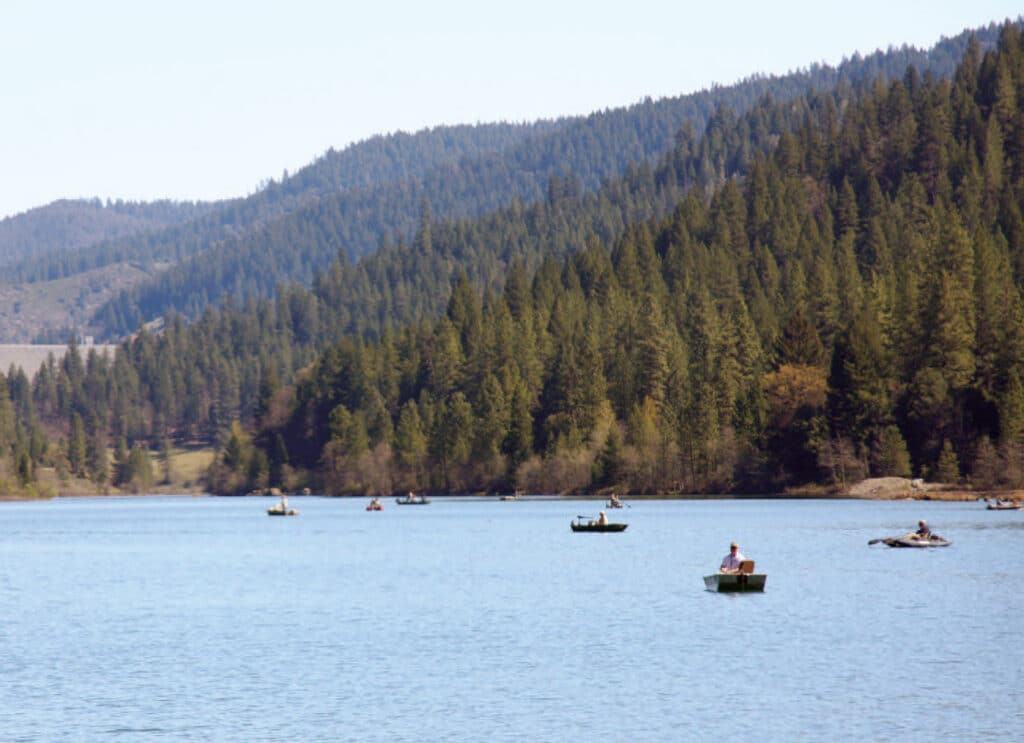
The other really good fishing area is not so well known. It’s the water at the Lakeview Terrace Resort (http://www.lakeviewterraceresort.com), downstream from Pine Cove. Their launch easily accommodates prams, small fishing boats, pontoon boats, and even float tubes. The lake here is generally shallower, the fish are more selective, and it isn’t as crowded. Although their launch ramp is private, all you need do to park and launch is merely stop by the resort’s office and ask permission. Currently, the managers are not charging a parking fee, so if you start fishing, you’re five dollars ahead and your good luck is already moving in the right direction.
For those who prefer to fish from float tubes, the Lakeview Terrace water is generally the most popular because the current tends to be slower than upstream at Pine Cove. That said, on any day you might get lucky and also find the current slow enough at Pine Cove to fish it comfortably from your tube, but more often than not Lakeview Terrace is the better choice. Besides, the latter tends to have plenty of fish, as well.
Midges and Callibaetis Mayflies
Success on Lewiston generally means fishing the midge or Callibaetis mayfly hatches or throwing leech imitations or Woolly Buggers on a sinking or intermediate line. While I would never suggest you abandon going the sinking-line route, I personally find floating-line tactics to be much more intriguing.
When I get to Lewiston, I typically start with a standard two-nymph rig suspended under a strike indicator. Leaders for nymphing should run at least nine feet in length and drop down to 6X. If you’re fishing fluorocarbon tippets, you might get away with tippets as large as 4X, but if others around you are catching fish and you’re not, using too large a tippet might be the reason. I usually hang my first nymph four or five feet below my strike indicator, with a dropper about a foot below. Be willing to go deeper or shallower until you find the level at which the majority of fish are holding.
Given that the trout are becoming more selective, the quality of your drift has to be good. The fish may have arrived at the lake in a hatchery truck, but after being caught and released a time or two, they are not going to fall for a mediocre drift.
The same goes for fly patterns. The same old same old won’t cut it. Once you determine what the fish seem to be eating, look for different patterns that imitate the insect. Very often, success might hinge on using a fly pattern that the trout haven’t learned to associate with pain in the lip.
In summer, the Callibaetis mayfly is king, and my favorite area to fish this hatch is Lakeview Terrace. During these warm months, trout cruise the shallows, focusing on each stage of the Callibaetis hatch cycle, starting with nymphs, then moving on to emergers or cripples, duns, and spinners. What I love about this fishing is that you really have to think. Stocked or not, Lewiston’s fish have always been tough.
From the Lakeview Terrace launch, I typically head over to the far side of the lake. A good opening gambit is to fish a nymph under an indicator, but you can also try lengthening your leader and swinging a Callibaetis nymph in the slow-moving water. For Callibaetis patterns, I confess a preference for those designed by friends Mike Mercer and Ken Morrish. I like Mercer’s Poxyback Callibaetis, sizes 14 to 16, and Morrish’s Anato-May Hare’s Ear, sizes 14 to 16. A common brown Birds Nest or Pheasant Tail nymph might still do the trick, too, although I think innovative patterns are a wise idea at Lewiston.
As the hatch progresses, the bugs and trout will focus on the meniscus, the surface film of the water. There is at least a moment of hesitation while the insect breaks through it. The trout have learned that this is a moment of vulnerability, and they capitalize on it. Fish emerger patterns exactly as if they were dry flies. I also think that shaking them in a powdered desiccant every few casts makes them float even more naturally. I lengthen my leader for this fishing to at least 12 feet and drop down to a 6X tippet. There are days when a 7X tippet will get even more strikes. Patterns to try include Mercer’s Poxyback Emerger, Harrop’s Last Chance Cripple, or a D&D Cripple, size 16.
There is no lack of good Callibaetis dry fly patterns, and as I noted, having a selection of ties that the trout may not have seen is a good strategy. You might try a CDC Hackle Stacker or a Quill Body Paradun instead of a standard or Parachute Adams — all size 16.
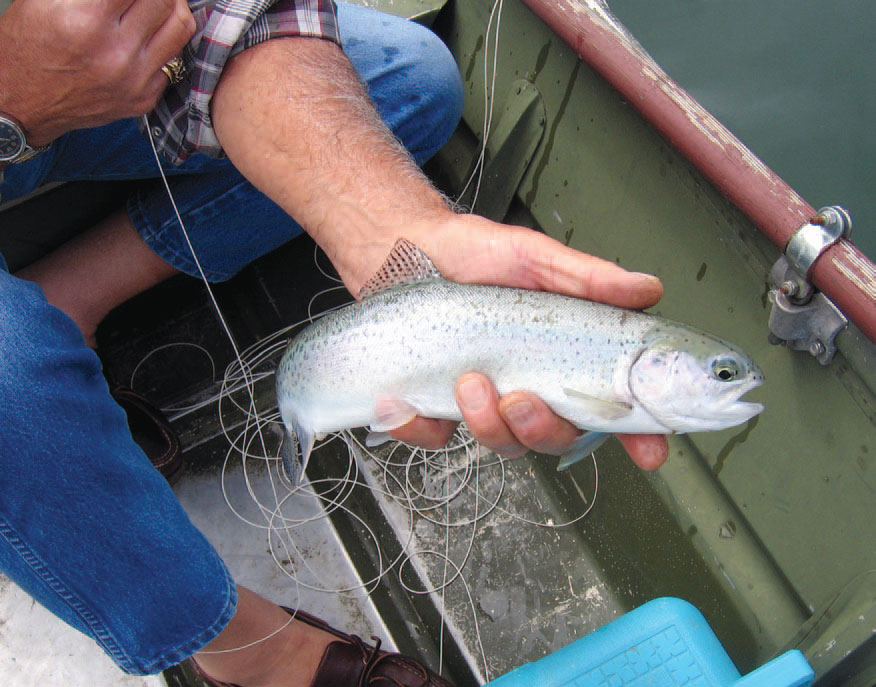
When the trout are obviously rising, but you see nothing on the water, it’s usually a sign that the fish might be taking spinner patterns. I always find this very challenging angling, because it’s so darned difficult to see these flies. What it eventually comes to is making a cast and marking where your fly has landed. Then keep your eye on the area where you think your fly is and set the hook on any rises in the vicinity. I’ve often set the hook on rises that I thought were some distance away from my spinner, only to have the happy realization that I’d just hooked a fish. Not all fishing luck is bad.
Good spinner patterns to try include CDC Biot Spinners, Twilight X Spinners, and a simple Sparkle Dun, size 16. What I really like about Sparkle Duns is they can pass for either duns or spinners and are much easier to see on the water than standard spinners.
During winter months, trout are more likely to key on the lake’s abundant supply of midges. Midge patterns worth trying include Mercer’s Black Zebra Midgeling, size 18, Brassies, size 16 to 18, and even larger varieties such as my Marlee Zebra Midge, size 12, or a Jumbo Juju Midge, size 14. The point is to keep switching flies until you find the right one.
Try Different Tactics
As mentioned earlier, experiment with depth when indicator fishing. Sometimes the fish may be in the top 6 feet of the water column, but other times they may be deeper. Although it can be amusing to try and land a trout on a rig with a long leader, fishing a few feet deeper than the length of your fly rod can often be worthwhile. That means, for instance, if you have a 9-foot fly rod, try fishing your nymph as much as 12 feet below your floating strike indicator. Hey, if the Spey guys can do it, so can we.
If you’re willing to lengthen your leader to 12 feet, you can even swing nymphs on a floating line in the moving water of the main channel. My favorite flies for this type of fishing (year-round) are soft-hackle patterns in a variety of colors and sizes. Tans and grays work well during the warmer months, and orange seems to work all year long.
I like to use 5-weight or 6-weight rods at Lewiston, and because sometimes longer casts are important, a stiff 9-foot rod is a useful tool. Fluorocarbon tippets are a great idea for subsurface presentations in this strikingly clear water. While I instinctively believe that presentation is more important than imitation when fishing to selective trout, both are probably important at Lewiston.
The worst thing you can do when confronted with selective fish is assume that the ways you’ve always caught fish at Lewiston Lake are the only ways. In some respects, the temporary hold on stocking is a gift to ardent Lewiston Lake aficionados. Being there is a gift itself, but having to learn how to fish outside of your comfort zone will ultimately help you reap even bigger rewards later on.



